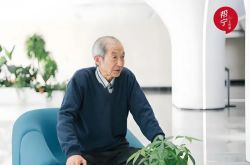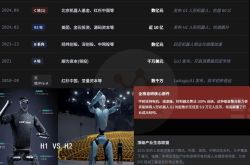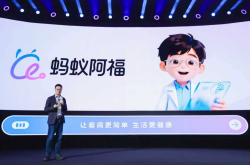Asian Auto Market | South Korea in August 2025: Tesla Witnesses Remarkable Growth
![]() 09/15 2025
09/15 2025
![]() 702
702
Produced by Zhineng Technology
In August 2025, the South Korean light vehicle market saw sales reach 138,400 units, marking a 1% year-on-year increase.
A distinct divergence in performance emerged between domestic automakers and foreign brands.
◎ Hyundai and Kia maintained their dominant positions but grappled with significant pressure in model competition, as newer-generation products began to supplant older models.
◎ Foreign brands such as Tesla and BMW experienced rapid growth, with Tesla notably expanding its presence in the electric vehicle market.
01 Overall Market Trends and Brand Landscape
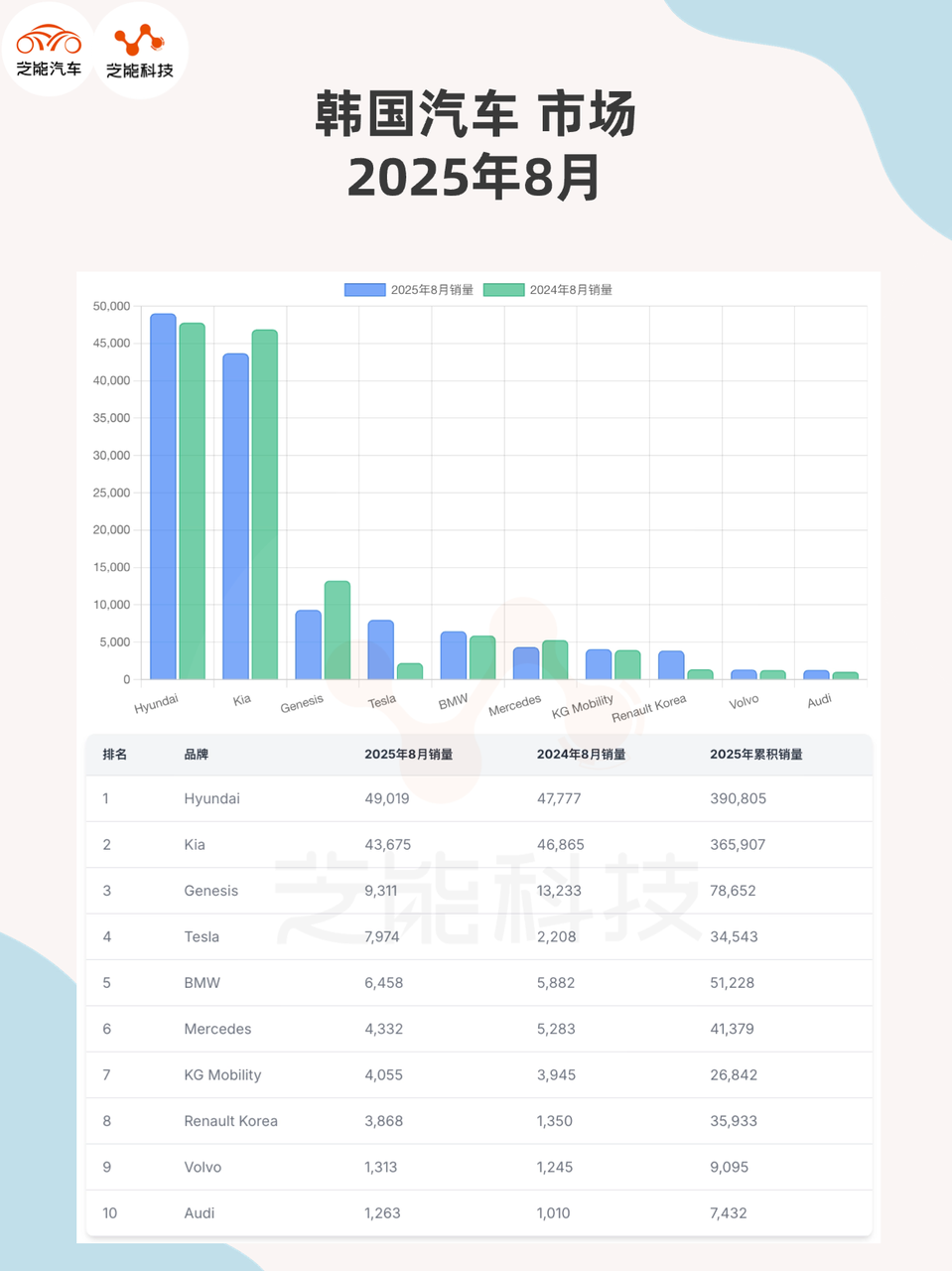
In August 2025, total vehicle sales in the South Korean auto market amounted to 138,408 units, up 1% year-on-year. Of these, domestic brands accounted for 111,109 units, a 3.2% decrease year-on-year, representing 80.3% of the market; foreign brands, on the other hand, sold 27,299 units, a 22.6% increase, making up 19.7% of the market.
This points to a subtle shift in the market structure, with domestic automakers still holding sway but foreign brands, particularly those in the new energy sector, gradually gaining traction.
◎ Hyundai sold 49,019 units, accounting for 35.4% of the market, a slight increase from the previous year, maintaining its top position.
◎ Kia sold 43,675 units, a 6.8% decrease, ranking second with a 31.6% market share.
The widening gap between the two reflects some shifts in internal competition.
Among luxury brands:
◎ Genesis sales dropped by 29.6%, with only 9,311 units sold, falling below the 10,000-unit mark, indicating resistance in its high-end expansion efforts.
◎ Tesla sold 7,974 units, a staggering 261.1% increase, ranking fourth with a 5.8% market share, a new single-month high.
◎ BMW sold 6,458 units, up nearly 10%, maintaining a leading position in the luxury segment;
◎ Mercedes-Benz sales declined by 18% due to product cycles and competition.
◎ Renault Korea witnessed an 186.5% surge with new products, returning to mainstream prominence.
Overall, domestic brands remained relatively stable but faced mounting pressure, while foreign new energy brands launched a significant offensive.
02 Model-Level Competition and Product Trends
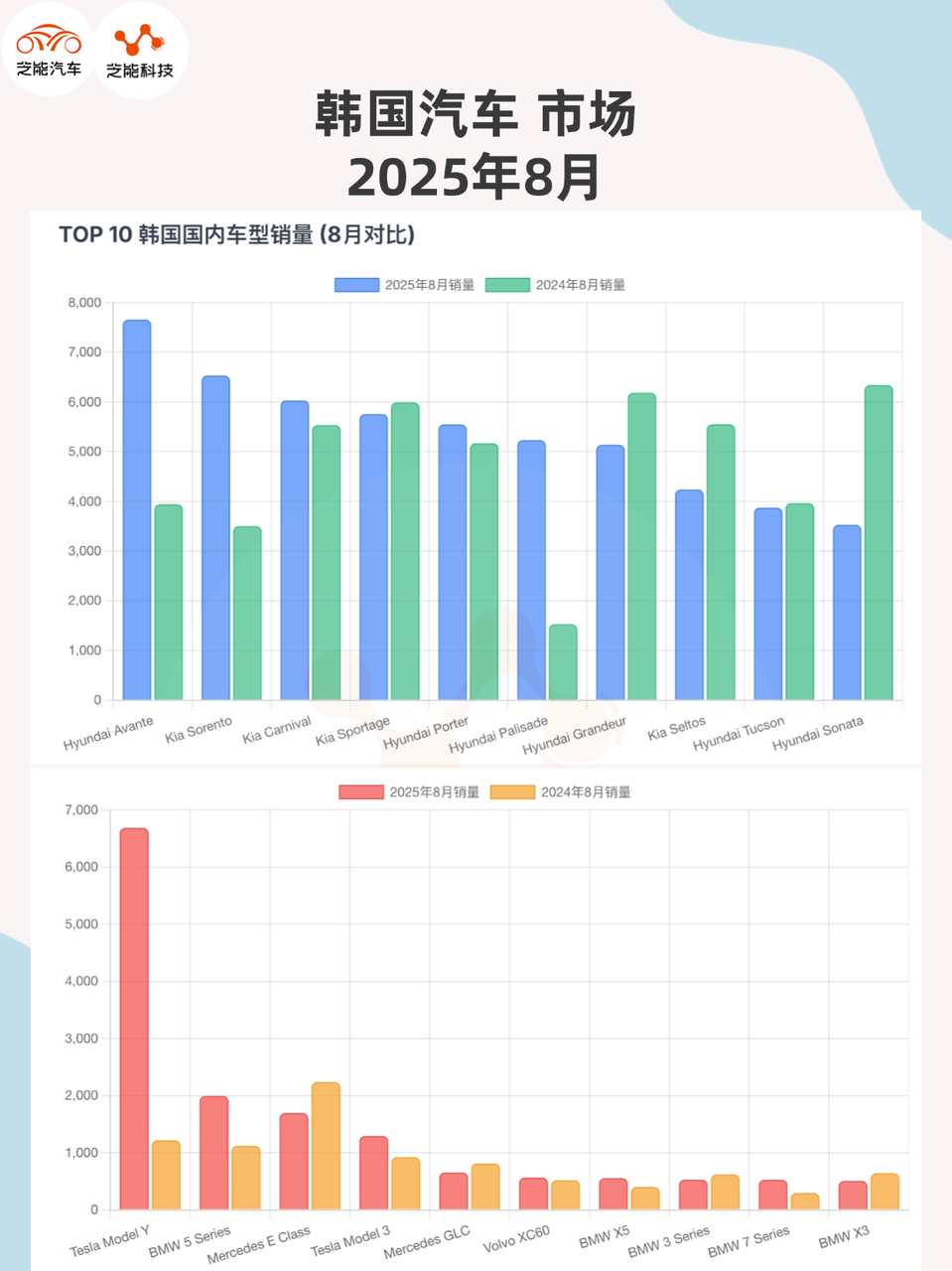
Regarding model rankings:
◎ Hyundai Elantra sold 7,655 units, topping the list for the first time in nearly four years, with a 94.3% year-on-year increase, ranking third year-to-date. Its renewed competitiveness after a redesign was evident.
◎ Kia Sorento sold 6,531 units, and Carnival 6,031 units, ranking second and third, respectively. Sorento saw an 86.5% increase. SUVs continued to be the mainstay.
◎ Hyundai Palisade experienced a 242.2% increase with its new model, ranking sixth in August but performing prominently year-to-date, becoming an SUV star. However, older models like Sonata and Santa Fe saw significant declines, indicating a shift in consumer preferences towards new products and new energy vehicles.
◎ In the new energy segment, Tesla Model Y sold 6,683 units, ranking first among imported vehicles and second overall, just behind Elantra. This demonstrated increased acceptance of electric vehicles among Koreans and exposed shortcomings in domestic high-end electric vehicles.
◎ BMW 5 Series and 7 Series saw steady growth, consolidating their luxury status.
◎ Among new models, Kia PV5 sold 161 units in its first month, with potential yet to be fully realized.
◎ Renault Korea's Grand Koleos and SM6 saw strong growth with their redesigns, indicating the effectiveness of localization strategies.
Summary
South Korea's domestic giants, Hyundai and Kia, remained dominant but experienced slower growth and a decline in the competitiveness of older models. Competition intensified in the new energy and luxury segments, with Tesla's growth introducing new variables. Foreign brands captured market share through differentiated products and electrification.


